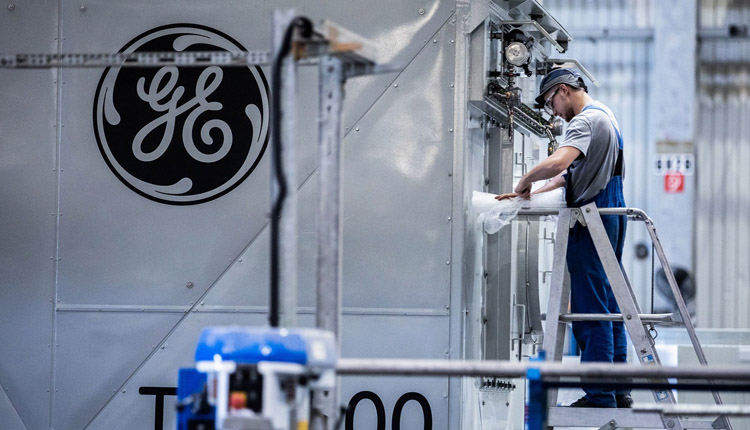General Electric reported second-quarter earnings on Wednesday that were slightly better than expected by Wall Street.
Shares of GE grew over 1 percent in premarket trading from its previous close of $10.52 a share.
GE reported adjusted earnings of 17 cents a share, down 6 percent from the same quarter last year but above the 12 cents a share anticipated by analysts surveyed by Refinitiv. The company also reported lower revenue of $28.83 billion compared to its previous second quarter, which was also a hair above the $28.68 billion analysts surveyed by Refinitiv expected.
The company also said its industrial free cash flow for second quarter was a negative $1 billion. GE’s metric of industrial free cash flow is closely watched by investors, as it shows what money the company has left over after paying for operating expenses and capital spending. Especially in the case of GE, industrial free cash flow is used as a gauge of efficiency.
“We made steady progress on our strategic priorities in the second quarter. Our top-line growth was solid, and Power made meaningful improvements on fixed cost reduction and project execution,” GE chairman and chief executive Larry Culp said in a statement.
GE’s industrial free cash flow appears to be stabilising near Culp’s forecast earlier this year. Some analysts expected GE would report second-quarter industrial free cash flow between negative $1 billion and negative $2 billion. GE’s filing said industrial free cash flow for the first half of the year was negative $2.2 billion, putting the company close to achieving Culp’s previous forecast of industrial free cash flow for the year between flat and negative $2 billion.
Culp tempered investor expectations for this year in previous comments, as he seeks to turn GE around. The company’s struggling power business “is in a serious turnaround mode,” Culp said in March, and GE expects the market for gas-powered turbines will remain stagnant through 2020.
Despite Culp’s warnings, GE shares are up nearly 45 percent this year — on pace for its best year since 1999.
Source: CNBC



